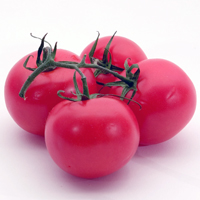Non-destructive method for monitoring tomato ripening based on chlorophyll fluorescence induction

Published: 10 November 2020
Abstract Views: 2754
PDF: 1008
HTML: 298
HTML: 298
Publisher's note
All claims expressed in this article are solely those of the authors and do not necessarily represent those of their affiliated organizations, or those of the publisher, the editors and the reviewers. Any product that may be evaluated in this article or claim that may be made by its manufacturer is not guaranteed or endorsed by the publisher.
All claims expressed in this article are solely those of the authors and do not necessarily represent those of their affiliated organizations, or those of the publisher, the editors and the reviewers. Any product that may be evaluated in this article or claim that may be made by its manufacturer is not guaranteed or endorsed by the publisher.
Similar Articles
- Qingyu Chen, Rui Kang, Naishuo Wei, Yunlei Fan, Zeyu Wang, Yu Chen, Jun Chen, Design and experiment optimize of the vibration harvesting machine of Lycium barbarum L. , Journal of Agricultural Engineering: Early Access
- Ferruccio Giametta, Flavio Fucci, Pasquale Catalano, Giovanna La Fianza, Thermo-fluid-dynamic modelling of a cold store for cheese maturation , Journal of Agricultural Engineering: Vol. 43 No. 4 (2012)
- Chiara Cevoli, Angelo Fabbri, Simone Virginio Marai, Enrico Ferrari, Adriano Guarnieri, Estimation of thermal conductivity of short pastry biscuit at different baking stages , Journal of Agricultural Engineering: Vol. 45 No. 2 (2014)
- Ester Foppa Pedretti, Daniele Duca, Giuseppe Toscano, Giovanni Riva, Andrea Pizzi, Giorgio Rossini, Matteo Saltari, Chiara Mengarelli, Massimo Gardiman, Riccardo Flamini, Sustainability of grape-ethanol energy chain , Journal of Agricultural Engineering: Vol. 45 No. 3 (2014)
- Davide Boscaro, Andrea Pezzuolo, Stefano Grigolato, Raffaele Cavalli, Francesco Marinello, Luigi Sartori, Preliminary analysis on mowing and harvesting grass along riverbanks for the supply of anaerobic digestion plants in north-eastern Italy , Journal of Agricultural Engineering: Vol. 46 No. 3 (2015)
- Ugo Lazzaro, Caterina Mazzitelli, Benedetto Sica, Paola Di Fiore, Nunzio Romano, Paolo Nasta, On evaluating the hypothesis of shape similarity between soil particle-size distribution and water retention function , Journal of Agricultural Engineering: Vol. 54 No. 4 (2023)
- Qazeem Opeyemi Ogunlowo, Adedayo Afeez Azeez, Wook Ho Na, Anis Rabiu, Misbaudeen Aderemi Adesanya, Ezatullah Zakir, John Ademola Ijadunola, Bukola Olanrewaju Afolabi, Babajide Saheed Kosemani, Titus Adeyinka Ilori, Hyun-Woo Lee, Analysis of microclimate temperature and relative humidity distribution of local poultry house in a subtropical area of Nigeria , Journal of Agricultural Engineering: Vol. 55 No. 2 (2024)
- Salahudin Zahedi, Kaka Shahedi, Mahmod Habibnejad Rawshan, Karim Solimani, Kourosh Dadkhah, Soil depth modelling using terrain analysis and satellite imagery: the case study of Qeshlaq mountainous watershed (Kurdistan, Iran) , Journal of Agricultural Engineering: Vol. 48 No. 3 (2017)
- Wei Ji, Tong Zhang, Bo Xu, Guozhi He, Apple recognition and picking sequence planning for harvesting robot in a complex environment , Journal of Agricultural Engineering: Vol. 55 No. 1 (2024)
- Ehsan Movahedi, Morteza Sadeghi, Amin Allah Masoumi, Naser Hamdami, A continuous high voltage electrostatic field system for thawing food materials , Journal of Agricultural Engineering: Vol. 52 No. 2 (2021)
<< < 24 25 26 27 28 29 30 31 32 33 > >>
You may also start an advanced similarity search for this article.

 https://doi.org/10.4081/jae.2020.1098
https://doi.org/10.4081/jae.2020.1098






